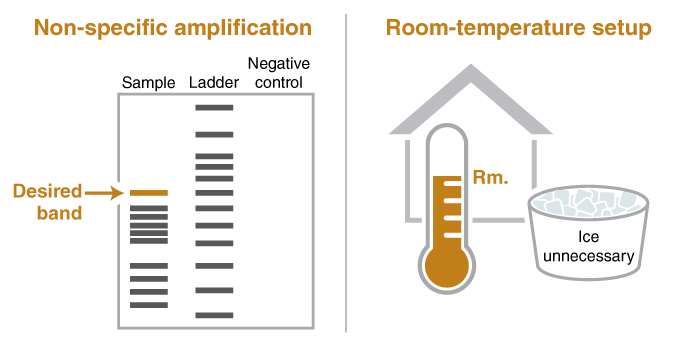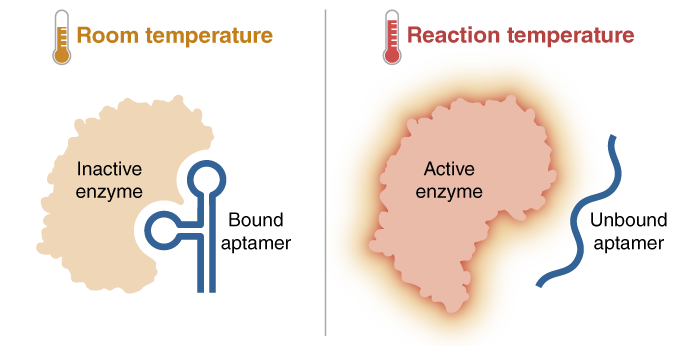- When setting up room temperature reactions off ice
- When non-specific amplification is observed

What does Hot Start/ Warm Start mean?
Our Hot Start and WarmStart polymerases utilize aptamers that inhibit enzyme activity at room temperature, which discourages the formation of nonspecific products. The presence of these aptamers does not alter core enzyme function.
The distinction between Hot Start and WarmStart is that Hot Start enzymes are thermophilic while WarmStart® enzymes are mesophilic; the thermodynamic range of the aptamers for Hot Start and WarmStart enzymes are largely similar.
Aptamers are engineered oligonucleotides that bind to a specific target molecule through non-covalent interactions and include specific nucleobase modifications that can improve inhibition profiles and/or reduce unintended side effects. The benefit of aptamer-based inhibition over other Hot Start technologies (like antibodies) is that they do not require an activation step and bind reversibly in a temperature-dependent manner.
NEB offers polymerases with aptamers for routine PCR, high-fidelity PCR, isothermal amplification, and reverse transcription. These aptamers can target different enzymatic functions for different polymerases.

Learn More
Why is it called "Hot Start?"
Like many non-proofreading, Family A DNA polymerases, Taq Polymerase possesses the ability to add bases onto the end of ssDNA in a template-independent manner even at room temperature, and can result in the addition of non-specific bases onto the ends of DNA primers in the reaction, enabling off-target hybridization and reduced overall reaction specificity. In contrast, at higher temperatures, nonspecific binding is reduced as annealing becomes more stringent. Early methods to mitigate undesired activity at low temperature focused on the exclusion of key reaction components until the reaction temperature was increased, which could then be spiked into the mixture, triggering the reaction under a more restrictive, high temperature condition.
Read our feature article, Using aptamers to control enzyme activities Hot Start Taq and beyond, to see data comparing product formation for enzymes with and without aptamer-based inhibition of activity.

